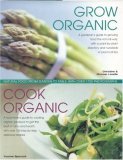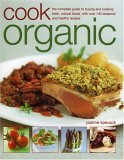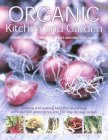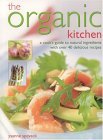Acerola (natural source Vitamin C)
Malpighia punicifolia
Acerola can be found growing wild and under cultivation on the sandy soils throughout north-eastern Brazil. It is native to northern South America, Central America, and Jamaica, Florida and Texas. The fruit of the Acerola Cherry tree, Malpighia punicifolia L. is rich in Vitamin C and carotenoids, with the cherry-like fruits being one of the richest known natural sources of vitamin C. The fresh fruit can contain up to 4000 mg Vitamin C per gram of fresh weight. Oranges provide 500 to 4,000 parts per million Vitamin C or ascorbic acid, while Acerola assays in the range of 16,000 to 172,000 parts per million.
- ANTIOXIDANT - Acerola's use is mostly associated with its high content of vitamin C and the synergistic bioflavonoids- rutin and hesperidin, providing one of nature's most potent antioxidants.
- IMMUNE SUPPORT - Acerola is an ideal food based source of nutrients necessary for immune support. Acerola is a rich source of vitamin C, bioflavonoids, carotenoids, and other vitamins, minerals and phytonutrients providing ideal synergy for immune cell function.
- NUTRITIVE - Compared to oranges, acerola provides twice as much magnesium, pantothenic acid, and potassium. Other vitamins present include vitamin A (4,300 to 12,500 IU/100 g, compared to approximately 11,000 IU for raw carrots), thiamine, riboflavin, and niacin in concentrations comparable to those in other fruits. One hundred and fifty other constituents have been identified in acerola; the major ones being furfural, hexadecanoic acid, and limonene. Acerola cherries are an excellent source of powerful antioxidants and are also rich in protein and mineral salts principally, iron, calcium and phosphorus.
- SKIN TONIC - Recent research in cosmetology indicates that vitamin C is a powerful antioxidant and free radical scavenger for the skin as well, and acerola extracts are now appearing in skin care products that fight cellular aging. In addition to its vitamin content, acerola contains mineral salts that have shown to aid in the re-mineralisation of tired and stressed skin, while the mucilage and proteins have skin hydrating properties and promote capillary conditioning.
Dosage
1g (1/4 tsp) one or two times daily, or as required. Viridian's Acerola powder provides approximately 18% vitamin C. Therefore 1g of powder provides 180mg vitamin C.
Potential applications:
Cold and flu prevention, detoxification, skin health, vascular disorders, vitamin C deficiency, tooth decay prevention. Acerola is also used traditionally as an astringent, diuretic, arterial stimulant for the liver and renal systems, and as a heart tonic. It is employed as a natural aid for anemia, diabetes, high cholesterol, liver problems, fungal infections, rheumatism, tuberculosis, and during convalescence. The free radical scavenging benefits of acerola are also useful for preventing abnormal growths and fighting cellular aging. The purity and presentation of acerola powder is ideal for children, providing an organic source of highly bio-available vitamin C and its co-factors.
Known contraindications
A study published in 2002 reported that acerola evidenced similar allergic reactivity to that of a well-known allergen, latex. Those who may be allergic to latex may also be allergic to acerola in supplement form or to its addition in various fruit juices.
Interactions
None known.
Use in conjunction with
Immune support - zinc complex, echinacea/astragalus, garlic, antioxidant complex
Note
Other constituents include: flavonoid-type antioxidants such as anthocyanins and proanthocyanidins, pectins, tannins, natural sugars, plant acids, red and yellow pigments, especially carotenoids, and essential oil.
REFERENCES
- Leme, J. Jr., et al. "Variation of ascorbic acid and beta-carotene content in lyophilized cherry from the West Indies (Malpighia punicifolia L.)." Arch. Latinoam. Nutr. 1973; 23(2): 207-15.
- de Medeiros, R. B., "Proportion of ascorbic, dehydroascorbic and diketogulonic acids in green or ripe acerola (Malpighia punicifolia)." Rev Bras Med. 1969; 26(7): 398-400.
- Pino, J. A., et al. "Volatile flavor constituents of acerola (Malpighia emarginata DC.) fruit." J. Agric. Food Chem. 2001; 49(12): 5880-82.
- Hwang, J., et al. "Soy and alfalfa phytoestrogen extracts become potent low-density lipoprotein antioxidants in the presence of acerola cherry extract." J. Agric. Food Chem. 2001; 49(1): 308-14.
- Raulf-Heimsoth, M., et al. "Anyphylactic reaction to apple juice containing acerola: Cross-reactivity to latex due to prohevein." J. Aller. and Clin. Immunol. 2002; 109 (4).
© Cheryl Thallon at Viridian
Like this page? Please link to us and let the world know!









